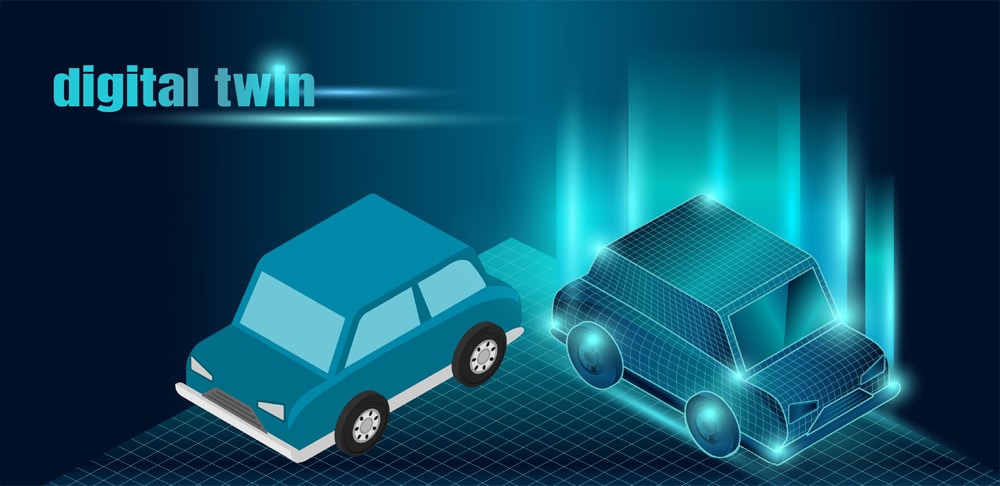Curious about the smarter side of car manufacturing? New tech like virtual tests and digital twins are shaping the way to smarter and faster car production techniques, thus transforming the way cars are built for improved efficiency and speed.

The landscape of product development is undergoing a transformative shift, and we are right in the middle of it, especially in the automotive industry. The traditional timelines for creating and launching new vehicles are being dramatically compressed. Companies across the globe are now aiming to bring new products to market in under two years. This acceleration presents formidable challenges, as the complexity of vehicles continues to rise with the integration of cutting-edge technologies and electronic control units (ECUs).
Electric vehicles (EVs) epitomise this shift. Unlike internal combustion engines, which have had decades to evolve, EV technology must be developed and refined concurrently with product development. This means that every component and system must be rigorously tested and validated before deployment, a process that is both time-consuming and costly.
Moreover, modern vehicles are evolving into multifunctional smart devices, offering a range of services beyond mere transportation. This adds another layer of complexity to their development, as they must now support a variety of software and hardware systems.
To address these challenges, the industry is increasingly turning to virtualisation. By simulating and testing components and systems in a virtual environment, developers can significantly reduce the time and cost associated with physical validation. This shift towards virtualisation is not just a response to the demands of rapid product development; it is a necessary evolution in an industry that is constantly pushing the boundaries of technology and innovation.
Better vehicle design with smart models
Model-based systems engineering (MBSE) is revolutionising the way we develop products. At the heart of MBSE is the use of models as the central element of the development process. These models are virtual replicas of components, subsystems, or even the entire vehicle. They provide a comprehensive understanding of how the product will behave in real-world scenarios.
The beauty of MBSE lies in the evolution of these models. They are not static; they grow and adapt as more information becomes available throughout the product development cycle. For instance, at the beginning of the development process, I might only know the basic specifications of a motor. But as the design progresses, my understanding of the motor’s characteristics improves, and the model evolves accordingly.
To illustrate this, let us consider the standard V-cycle of product development, a framework widely recognised across the industry. The process begins with defining the requirements based on stakeholder needs, such as the desired acceleration or range of a vehicle. Using the MBSE approach, we then systematically develop the vehicle architecture, focusing on the systems of interest, which are the key areas for innovation in each design cycle.
Concurrent engineering comes into play as we delve into the specifics. For example, while the battery development team works on the cell and pack design, a parallel team focuses on the software aspects of the battery management system. This approach ensures that both hardware and software components are developed in tandem, optimising the overall system performance.
As we move further into the detailed design stage, the models become more refined, incorporating intricate details such as cooling circuits and cell placement. These designs are then integrated back into the system model for validation at the subsystem level, using model-in-loop and hardware-in-loop environments.
The final stage involves vehicle-level performance evaluation where key performance parameters of the vehicle are evaluated and compared against requirements. The virtualisation process, however, does not stop there. With the advent of digital twins, we can now monitor the vehicle’s health in real-world conditions, enabling predictive maintenance and diagnostics.
The systematic nature of MBSE is particularly valuable in managing the complex, interdependent, and often conflicting requirements of vehicle development. For example, balancing performance with cost constraints can be challenging, but MBSE provides a structured approach to navigate these trade-offs.
Not every organisation has fully embraced MBSE yet, but for those who do find it immensely beneficial, it allows for continuous validation at every stage of development, preventing costly mistakes and rework. Various analytical tools, from simple Excel sheets to advanced simulation models, are used to support this process, ensuring that the vehicle’s performance aligns with the defined requirements.
| The shift left strategy |
| The ‘shift left’ strategy is a popular topic in product development circles, frequently discussed at conferences and industry events. Its core principle is to start the development process with a comprehensive understanding of the product. By doing so, we can avoid costly and time-consuming rework later in the development cycle. Implementing the shift left strategy means proactively addressing potential issues and refining the product concept from the outset. This approach helps streamline the development process, reduce costs, and accelerate time to market. |
Testing products with simulations
Virtual validation is a transformative approach in product development that utilises simulations to predict a product’s performance before physical testing commences. This method is not intended to eliminate physical testing but rather to complement it by minimising the number of required tests. For example, simulations can be employed to evaluate a motor’s performance under various conditions or to assess the thermal management of a battery. By implementing these simulations early in the design phase, potential issues can be identified and addressed before moving on to physical prototypes.
The validation process encompasses multiple levels, ranging from individual components to entire systems. At the component level, simulations might concentrate on specific aspects such as motor performance or battery thermal management. Subsystem-level validation could involve examining how a battery management system (BMS) reacts to different scenarios, such as disengaging a cell due to a low state of charge or managing fire hazards. Ultimately, vehicle-level validation assesses the overall performance under various conditions, including different terrains and climates.
One of the challenges in virtual validation is ensuring that simulations accurately reflect real-world behaviour. This necessitates not only the development of detailed models but also their calibration to accurately capture the underlying physics. For instance, a battery model should replicate the temperature changes during charge and discharge cycles as they would occur in an actual battery.
As we progress towards more comprehensive vehicle-level simulations, the environment in which the vehicle operates becomes a critical factor. The performance of a vehicle can differ significantly depending on whether it is driven in a city, on a highway, or in mountainous regions. Integrating environmental factors into simulations aids in making more accurate predictions about vehicle behaviour in different conditions.
Supporting the advancement of virtual validation is reduced order modelling, a technique that compresses complex physics-based models, making them more suitable for integration into system-level simulations that run closer to real-time. Additionally, machine learning plays a crucial role in calibrating models based on real-world data, ensuring that they accurately reflect the variability and uncertainties of actual operating conditions.
Improving cars with digital twins
A critical aspect that original equipment manufacturers (OEMs) focus on is the integration of numerous sensors within vehicles to capture a wealth of telemetry data. This data holds the key to unlocking a deeper understanding of vehicle performance and behaviour. As we move towards personalisation and customisation of vehicles, the concept of over-the-air (OTA) updates emerges as a pivotal tool for enhancing vehicle performance. But how can we achieve this? The answer lies in the utilisation of digital twins and the Internet of Things (IoT).
The core idea is to create a virtual replica of the vehicle in a cloud or IoT environment. This digital twin continuously learns from the real-world data collected by the vehicle’s sensors and adjusts itself accordingly. By doing so, it mirrors the behaviour of the actual vehicle based on the driver’s real-world driving patterns. This capability allows for the prediction of future performance, such as estimating the battery’s capacity loss after say 10,000 kilometres or identifying potential failures.
Moreover, the digital twin enables the customisation of software controls to optimise performance for specific driving patterns. This is where OTA updates come into play, allowing for the personalisation of the vehicle’s software to enhance its performance based on individual driving habits.
There are use cases in the open domain where we have demonstrated how physics-based models can be integrated into a cloud-based environment, specifically focusing on software-defined vehicles. This integration showcases the potential of digital twins and IoT in revolutionising vehicle performance and personalisation, ultimately providing a more tailored and efficient driving experience.
The automotive industry is experiencing a rapid transformation in product development. The shift towards electric vehicles, coupled with the increasing complexity of vehicle systems, requires innovative approaches to streamline the development process. Virtualisation, MBSE, and virtual validation are key strategies being adopted to address these challenges. By embracing these technologies, companies can accelerate product development, reduce costs, and deliver vehicles that meet the demands of the modern market.
This article is put together from a tech talk given at EFY Expo 2023, Delhi by Tushar Sambharam, Principal Solution Architect, Electrification, Ansys. It has been transcribed and curated by Nidhi Agarwal, Technology Journalist at EFY








